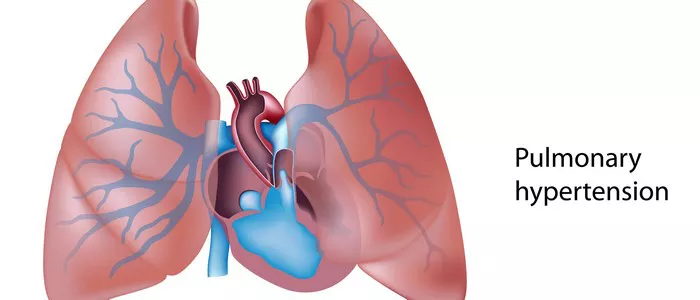Pulmonary hypertension (PH) is a complex and often misunderstood condition that affects the blood vessels in the lungs and the right side of the heart. It is characterized by high blood pressure in the pulmonary arteries, which are the blood vessels that carry blood from the heart to the lungs for oxygenation. This condition can lead to serious complications and significantly impact a person’s quality of life. In this article, we will delve into the intricacies of pulmonary hypertension, its causes, symptoms, diagnosis, and treatment, to determine whether it is primarily a heart or lung disease.
Understanding Pulmonary Hypertension
To understand whether pulmonary hypertension is a heart or lung disease, it is essential to first grasp the underlying physiology of the cardiovascular and respiratory systems. The heart and lungs work together to ensure that oxygen is delivered to the body’s tissues and carbon dioxide is removed. The pulmonary arteries carry deoxygenated blood from the heart’s right ventricle to the lungs, where it picks up oxygen and releases carbon dioxide through the process of gas exchange.
Causes of Pulmonary Hypertension
Pulmonary hypertension can be classified into different types based on its underlying causes. These include:
1. Pulmonary Arterial Hypertension (PAH): This type of PH occurs when the small arteries in the lungs (pulmonary arterioles) become narrowed or blocked, leading to increased resistance to blood flow. PAH can be idiopathic (of unknown cause), heritable (genetic), or associated with other conditions such as connective tissue diseases, HIV infection, or exposure to certain drugs and toxins.
2. Pulmonary Hypertension Due to Left Heart Disease: PH can also result from conditions that affect the left side of the heart, such as heart failure, valvular heart disease, or cardiomyopathy. In these cases, elevated pressure in the left atrium and ventricle can be transmitted backward to the pulmonary circulation, causing PH.
3. Pulmonary Hypertension Due to Lung Diseases and/or Hypoxia: Chronic lung diseases such as chronic obstructive pulmonary disease (COPD), interstitial lung disease, and sleep apnea can lead to PH due to hypoxia (low oxygen levels) and increased pulmonary vascular resistance.
4. Chronic Thromboembolic Pulmonary Hypertension (CTEPH): This rare form of PH occurs when blood clots (thrombi) obstruct the pulmonary arteries, leading to increased pressure and vascular remodeling. CTEPH can result from acute pulmonary embolism or chronic thrombotic disease.
5. Other Causes: PH can also be associated with conditions such as sarcoidosis, pulmonary vasculitis, congenital heart defects, and schistosomiasis, among others.
Symptoms and Diagnosis
The symptoms of pulmonary hypertension can vary depending on the underlying cause and the severity of the condition. Common symptoms include shortness of breath, fatigue, chest pain or pressure, dizziness or fainting (syncope), swollen ankles or legs (edema), and bluish lips or skin (cyanosis) in advanced cases.
Diagnosing pulmonary hypertension typically involves a comprehensive evaluation that includes:
- Medical history and physical examination
- Imaging tests such as echocardiography, chest X-ray, CT scan, and ventilation/perfusion (V/Q) scan
- Pulmonary function tests to assess lung function
- Blood tests to check for markers of PH and underlying causes
- Right heart catheterization, which is considered the gold standard for diagnosing PH and measuring pulmonary artery pressures directly
Treatment of Pulmonary Hypertension
The management of pulmonary hypertension aims to alleviate symptoms, improve quality of life, and slow disease progression. Treatment strategies may include:
1. Medications: Depending on the type and severity of PH, medications such as vasodilators (e.g., calcium channel blockers, prostacyclin analogs, endothelin receptor antagonists), diuretics, anticoagulants, and oxygen therapy may be prescribed.
2. Lifestyle Modifications: Patients with PH are often advised to adopt healthy lifestyle habits such as quitting smoking, maintaining a healthy weight, staying physically active within their limits, and following a heart-healthy diet low in sodium and saturated fats.
3. Surgical and Interventional Procedures: In some cases, surgical interventions such as pulmonary thromboendarterectomy (for CTEPH), lung transplantation, or placement of a pulmonary artery catheter for continuous monitoring may be recommended.
4. Pulmonary Rehabilitation: Pulmonary rehabilitation programs can help improve exercise tolerance, respiratory muscle strength, and overall well-being in patients with PH.
Is Pulmonary Hypertension Primarily a Heart or Lung Disease?
Based on the classification of pulmonary hypertension into different types, it is evident that PH can have both cardiac and pulmonary origins. Pulmonary arterial hypertension (PAH) primarily involves the pulmonary vasculature and is often considered a lung-related condition due to its effects on the small arteries in the lungs. On the other hand, PH due to left heart disease or lung diseases directly affects the heart or lungs, respectively.
In summary, pulmonary hypertension is a complex condition that can result from various cardiac and pulmonary abnormalities. While it may manifest primarily as a lung-related disease in some cases (e.g., PAH), it is ultimately a disorder of the pulmonary circulation that involves interactions between the heart and lungs.
Conclusion
Pulmonary hypertension represents a significant medical challenge due to its diverse etiology, complex pathophysiology, and potential for serious complications. By understanding the underlying mechanisms and contributing factors, healthcare professionals can effectively diagnose, treat, and manage this condition to improve patient outcomes and quality of life. Ongoing research and advancements in PH management continue to enhance our understanding and therapeutic options for this complex cardiovascular disorder.


